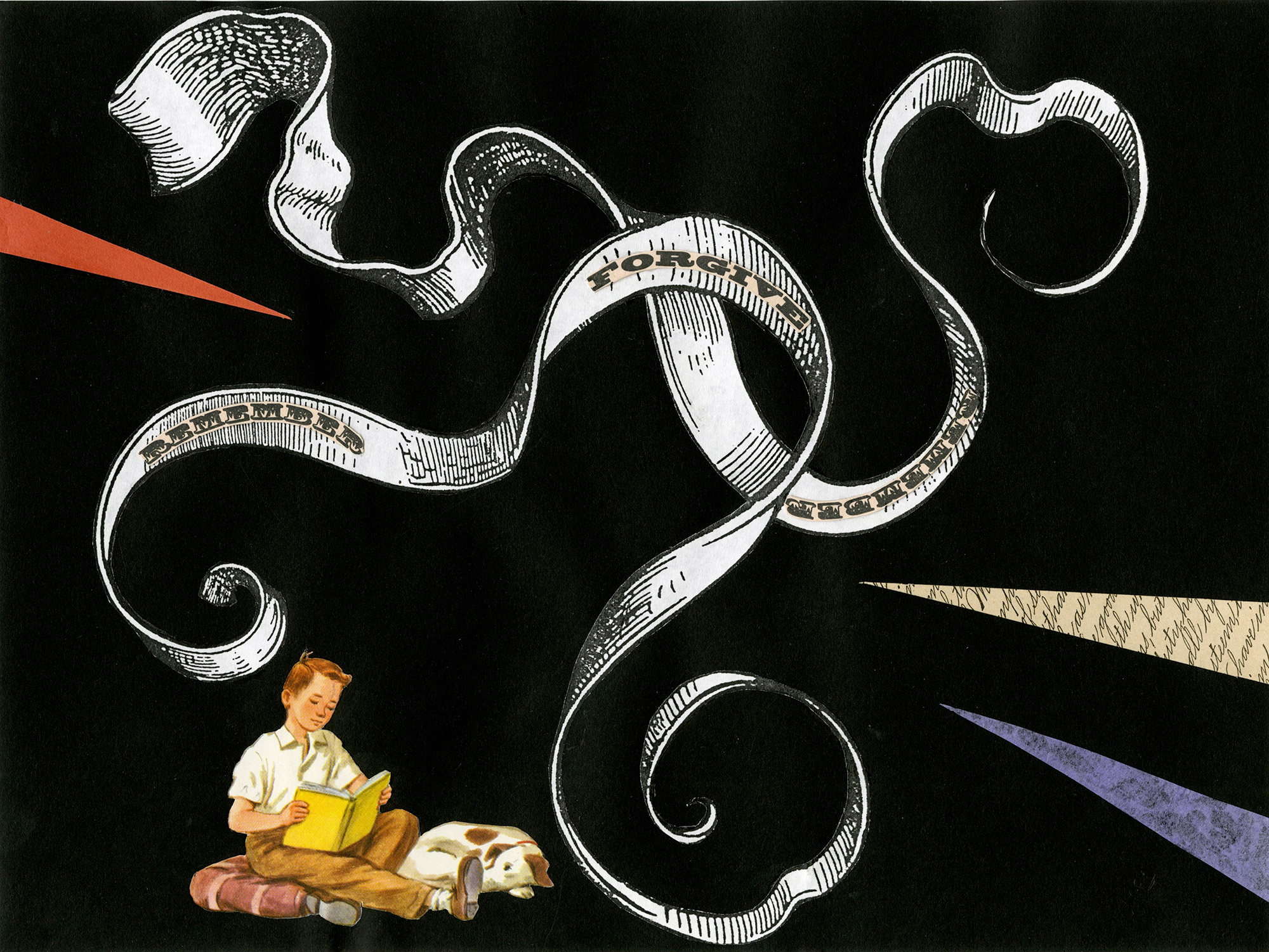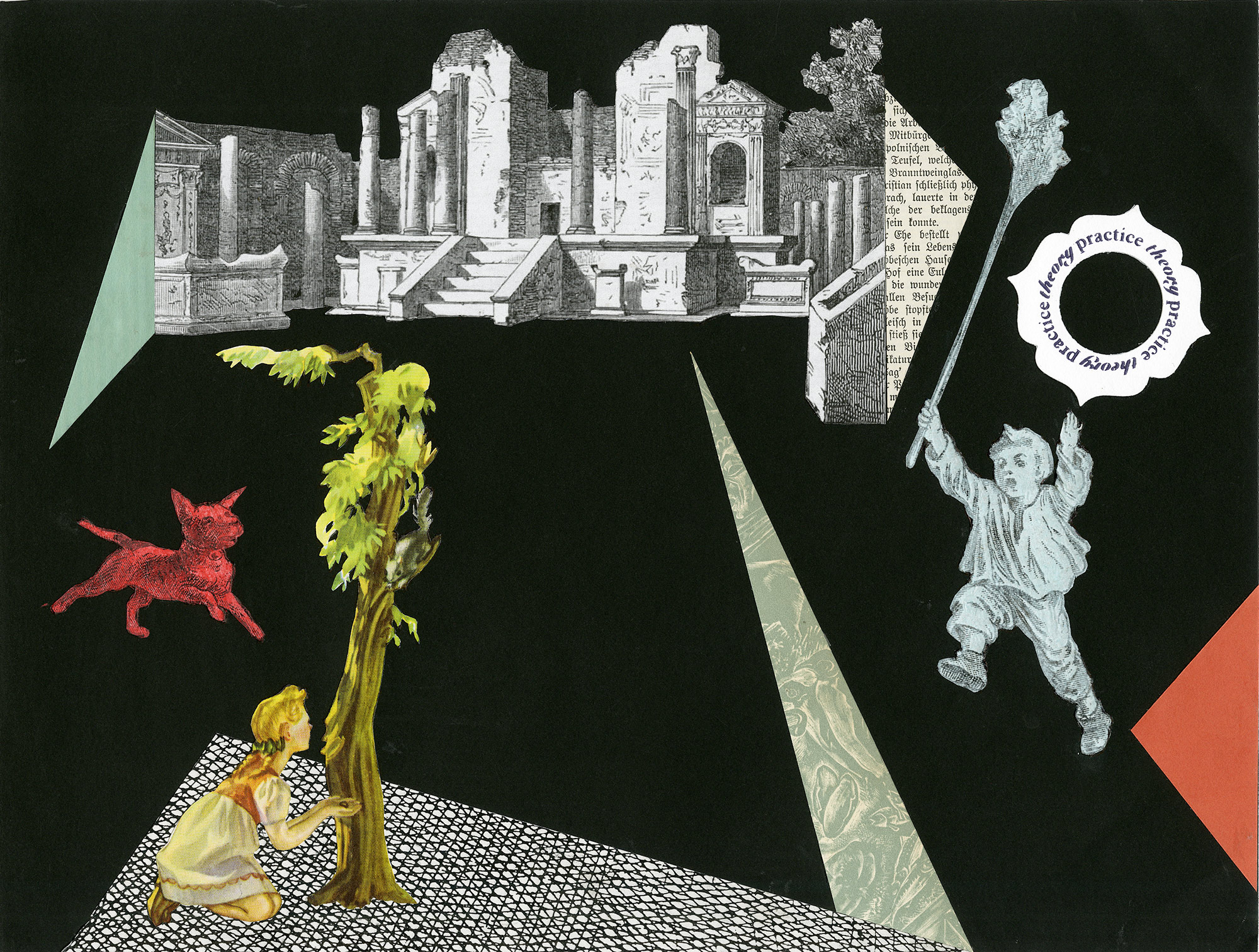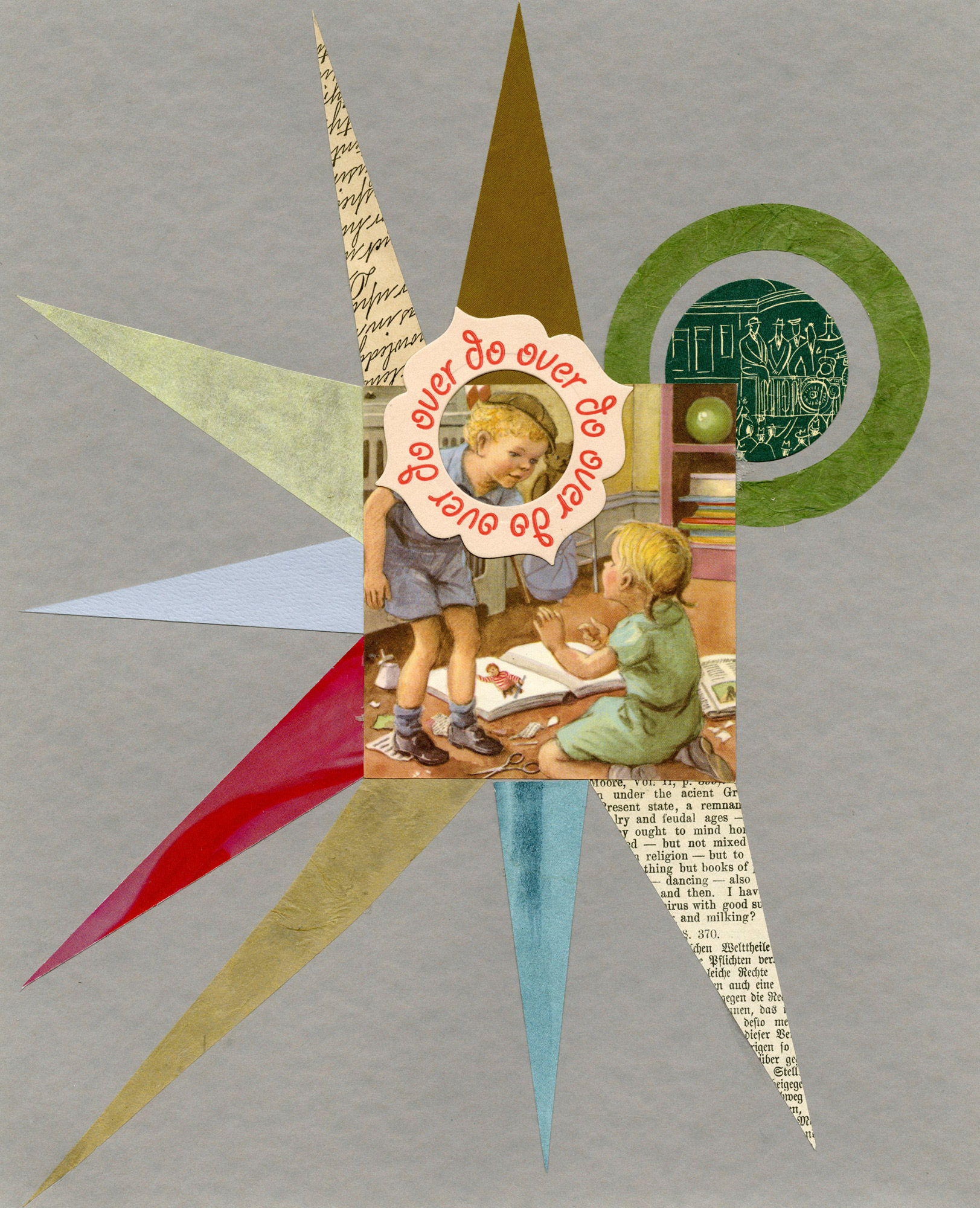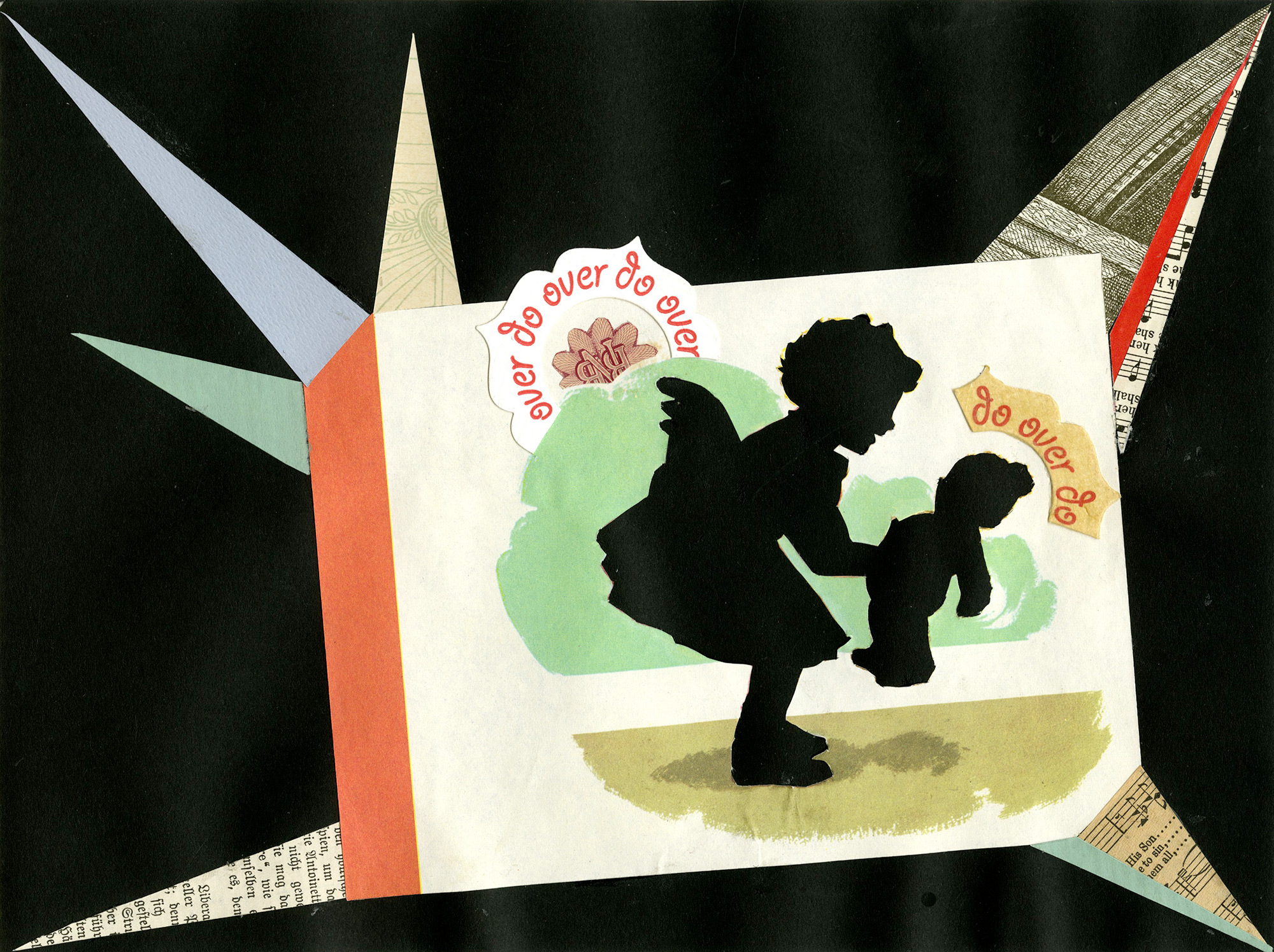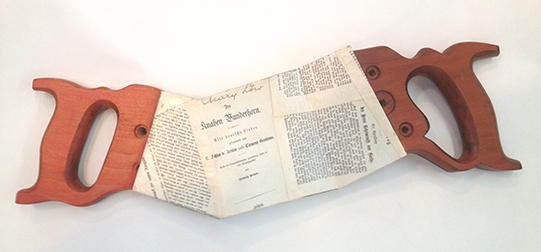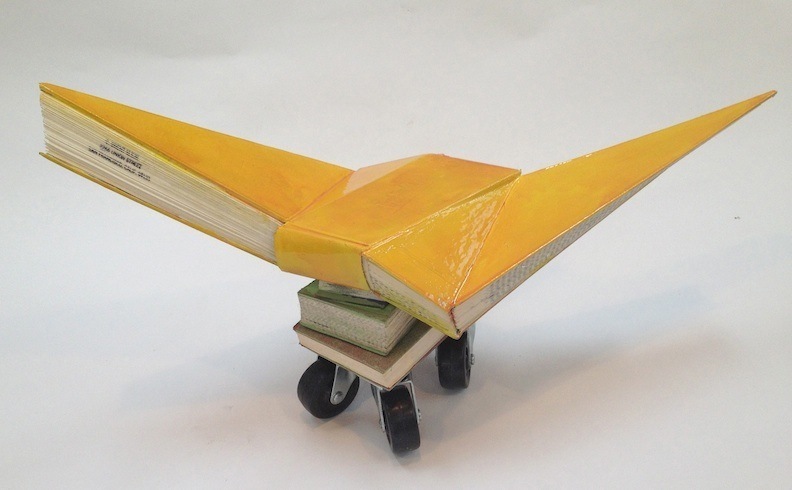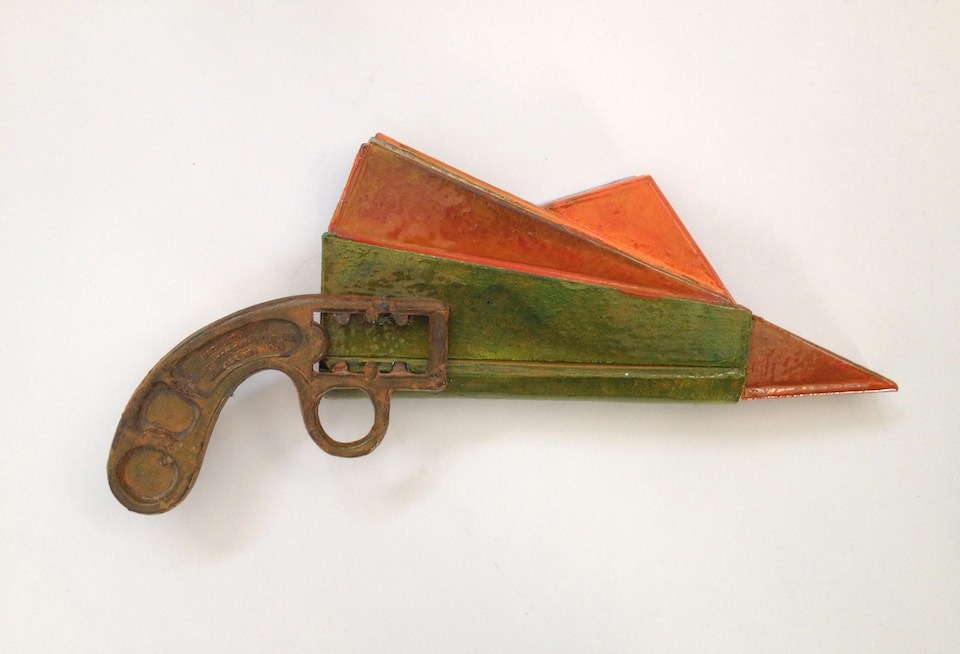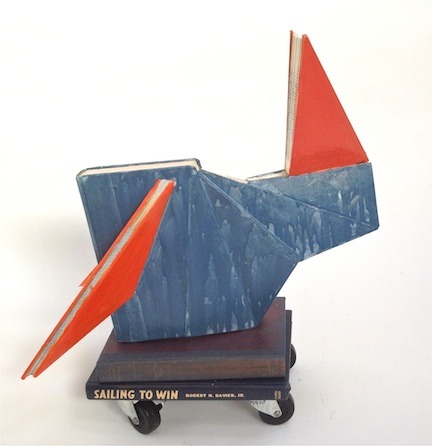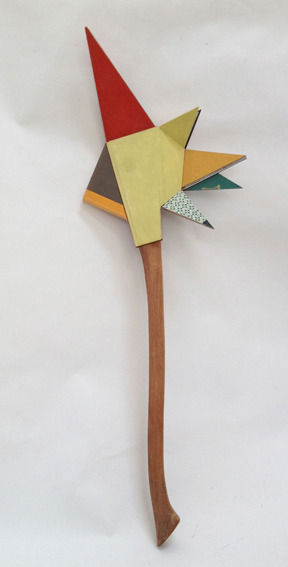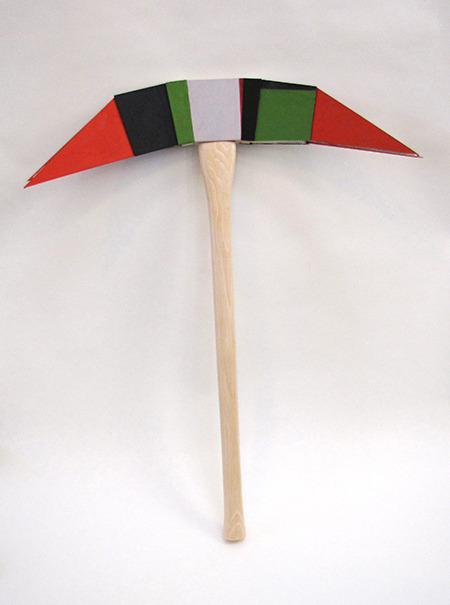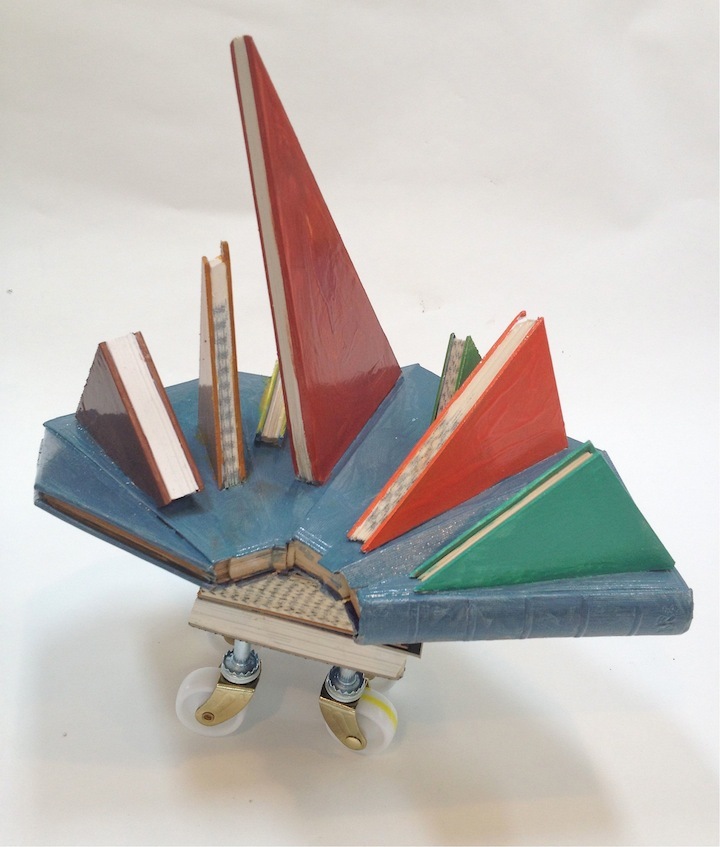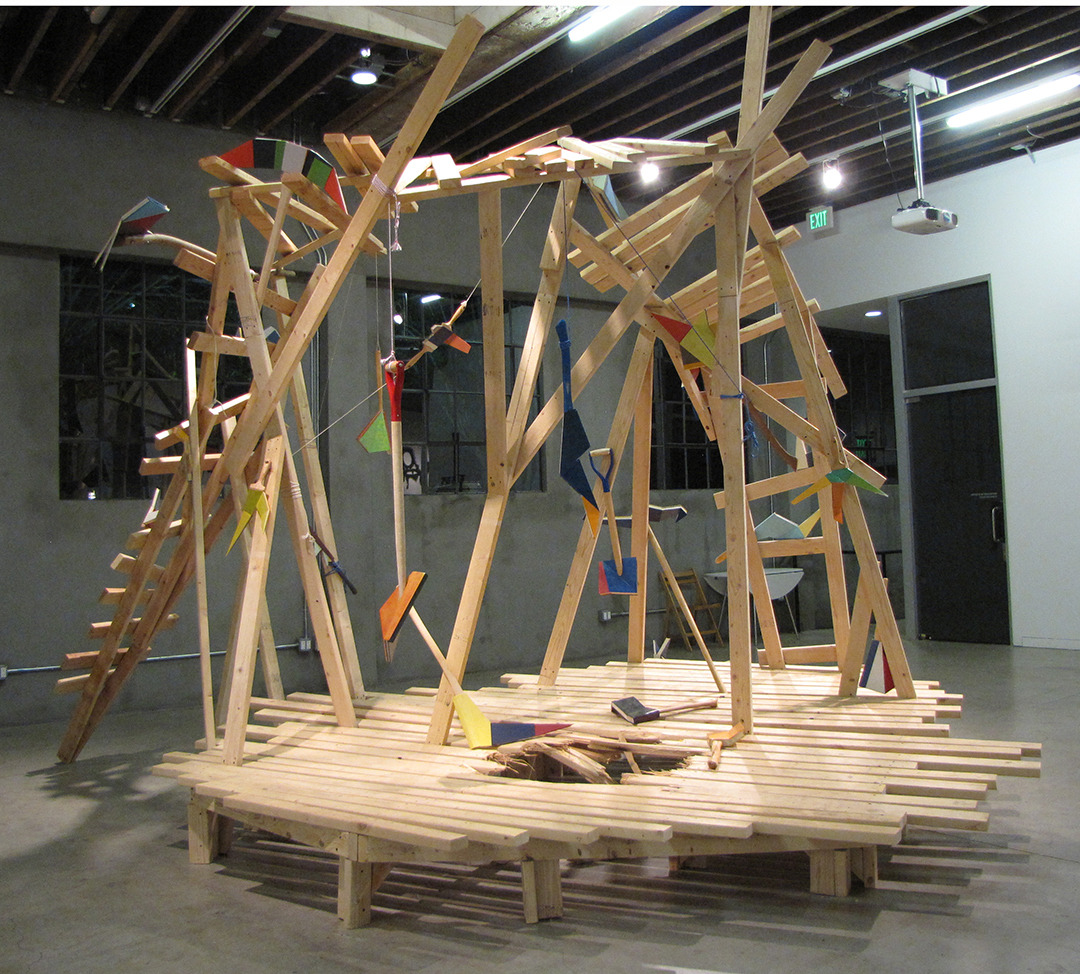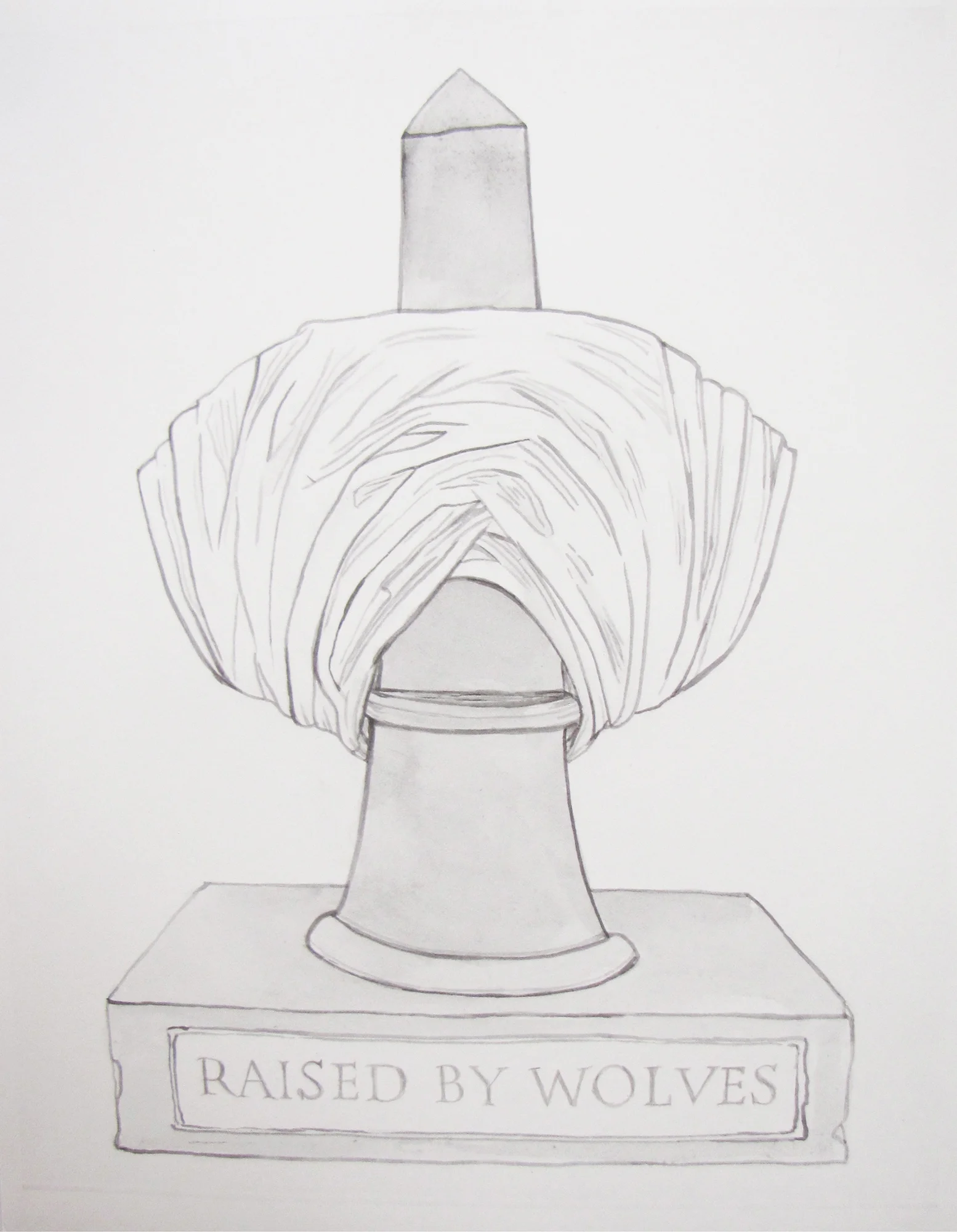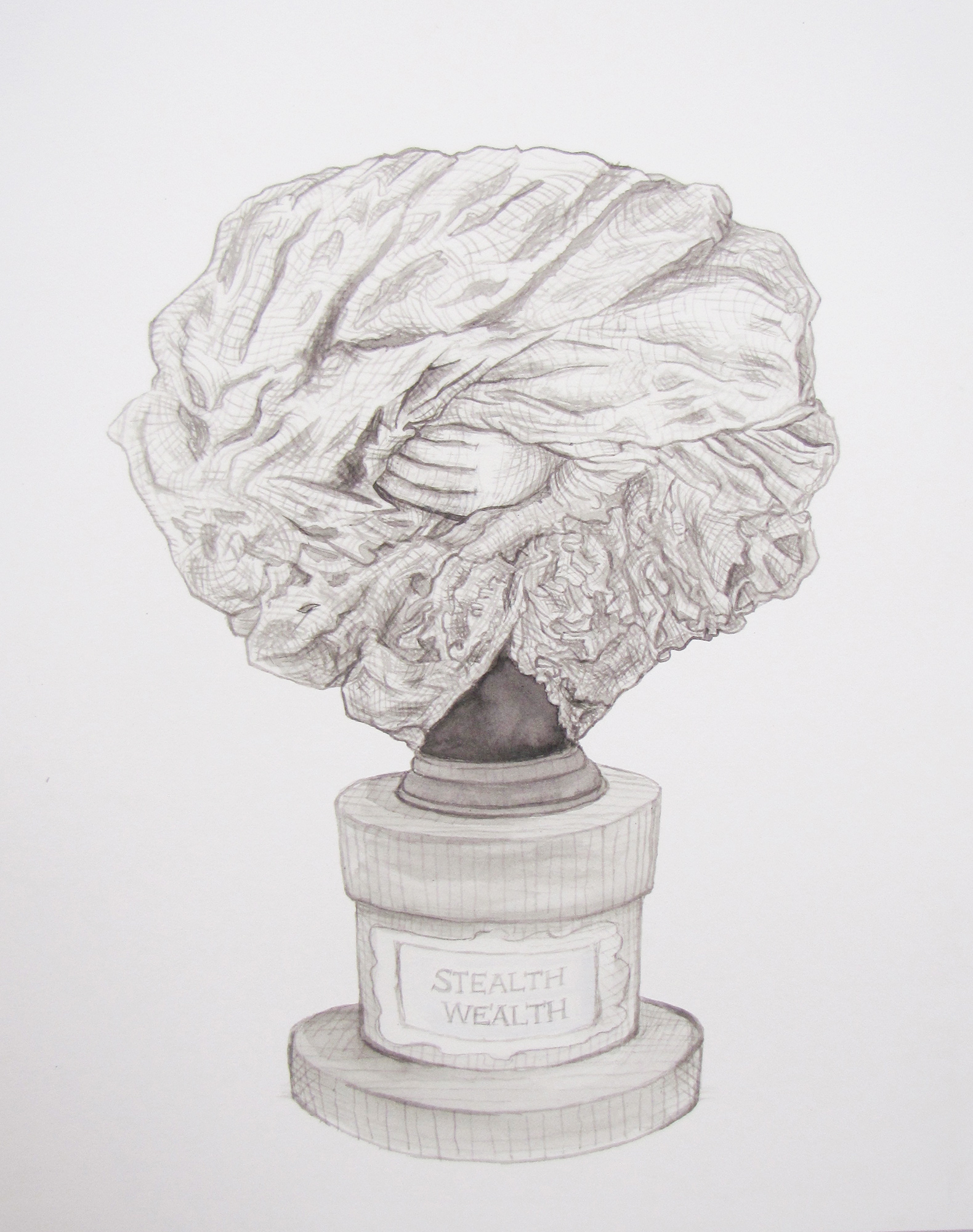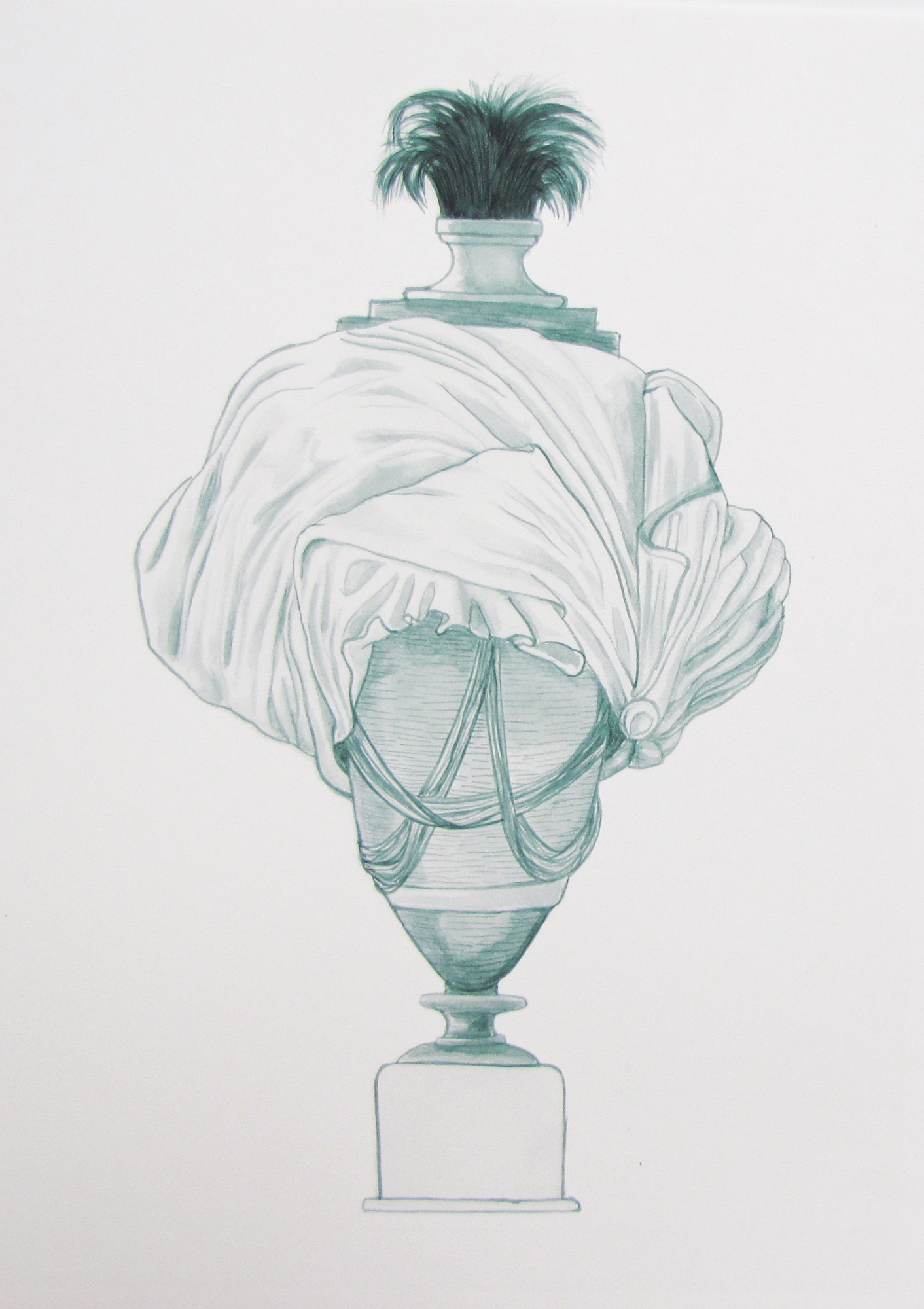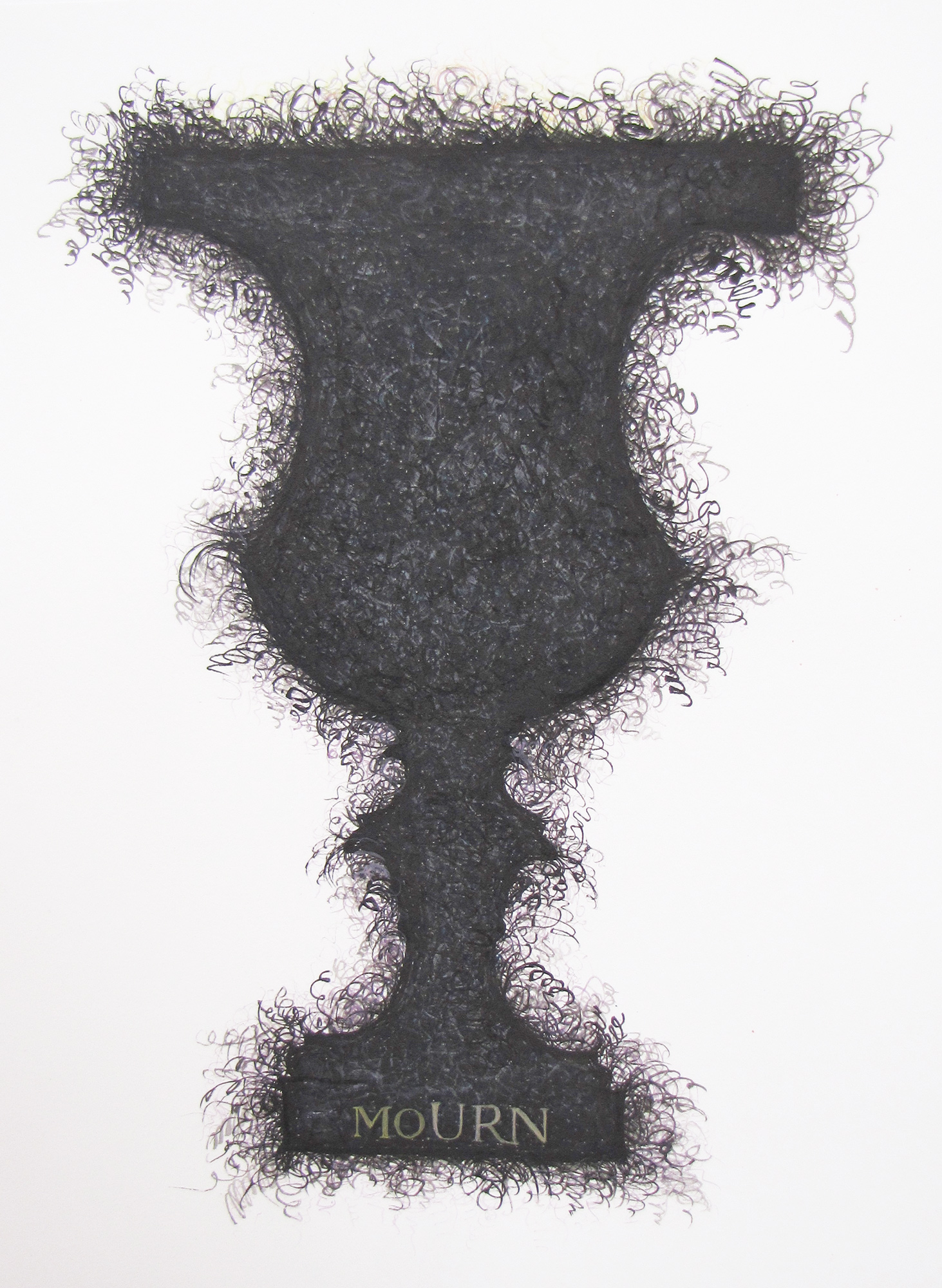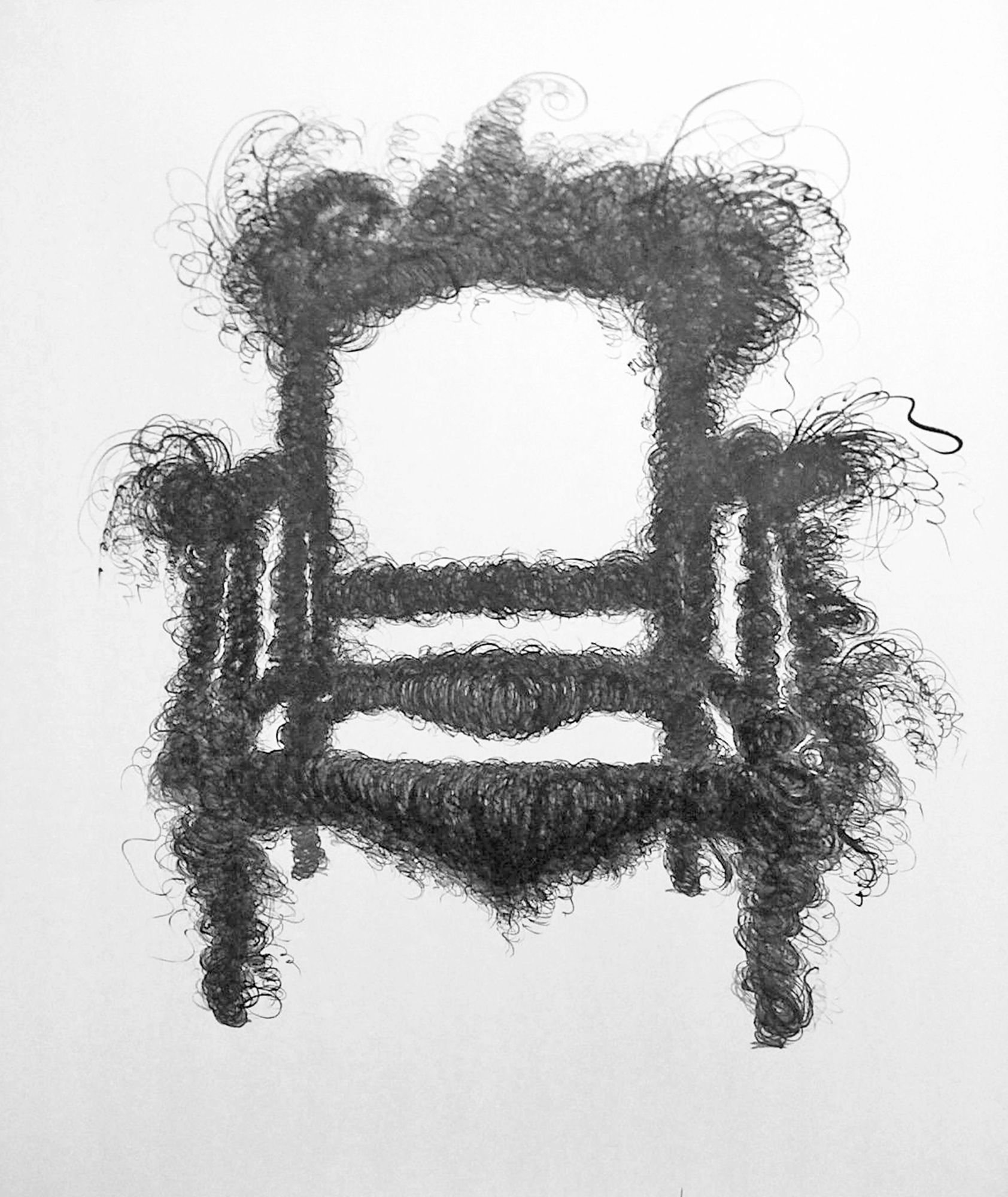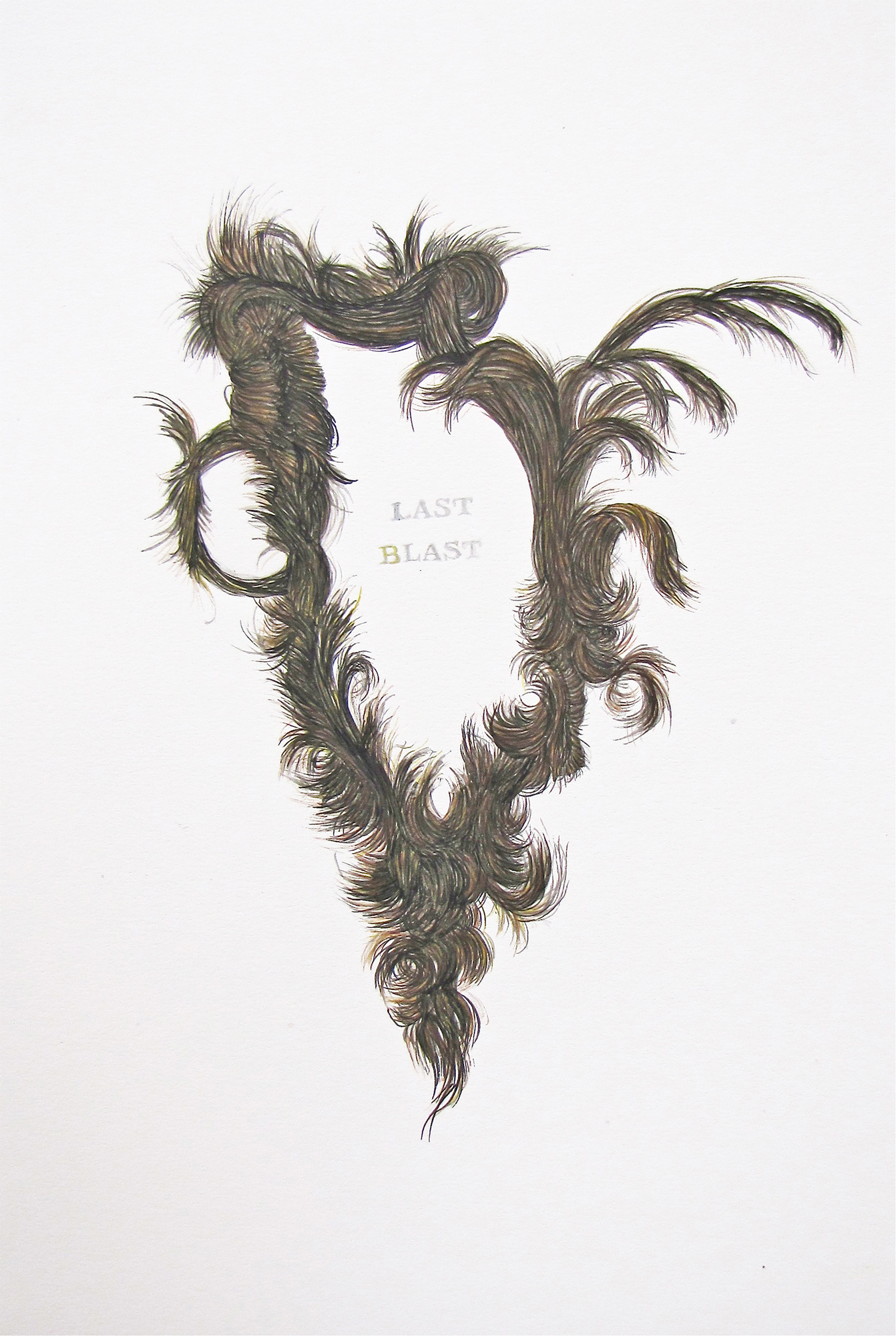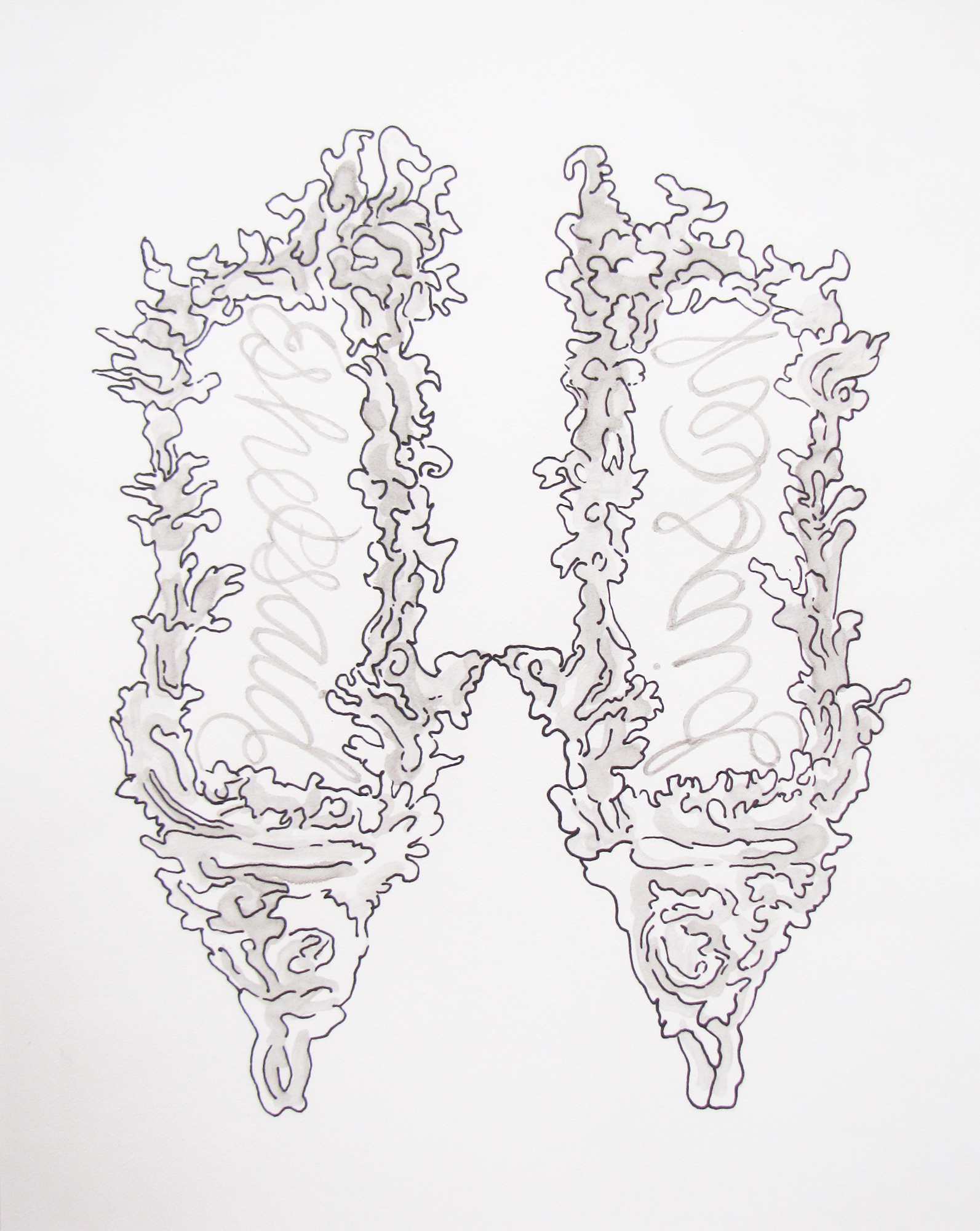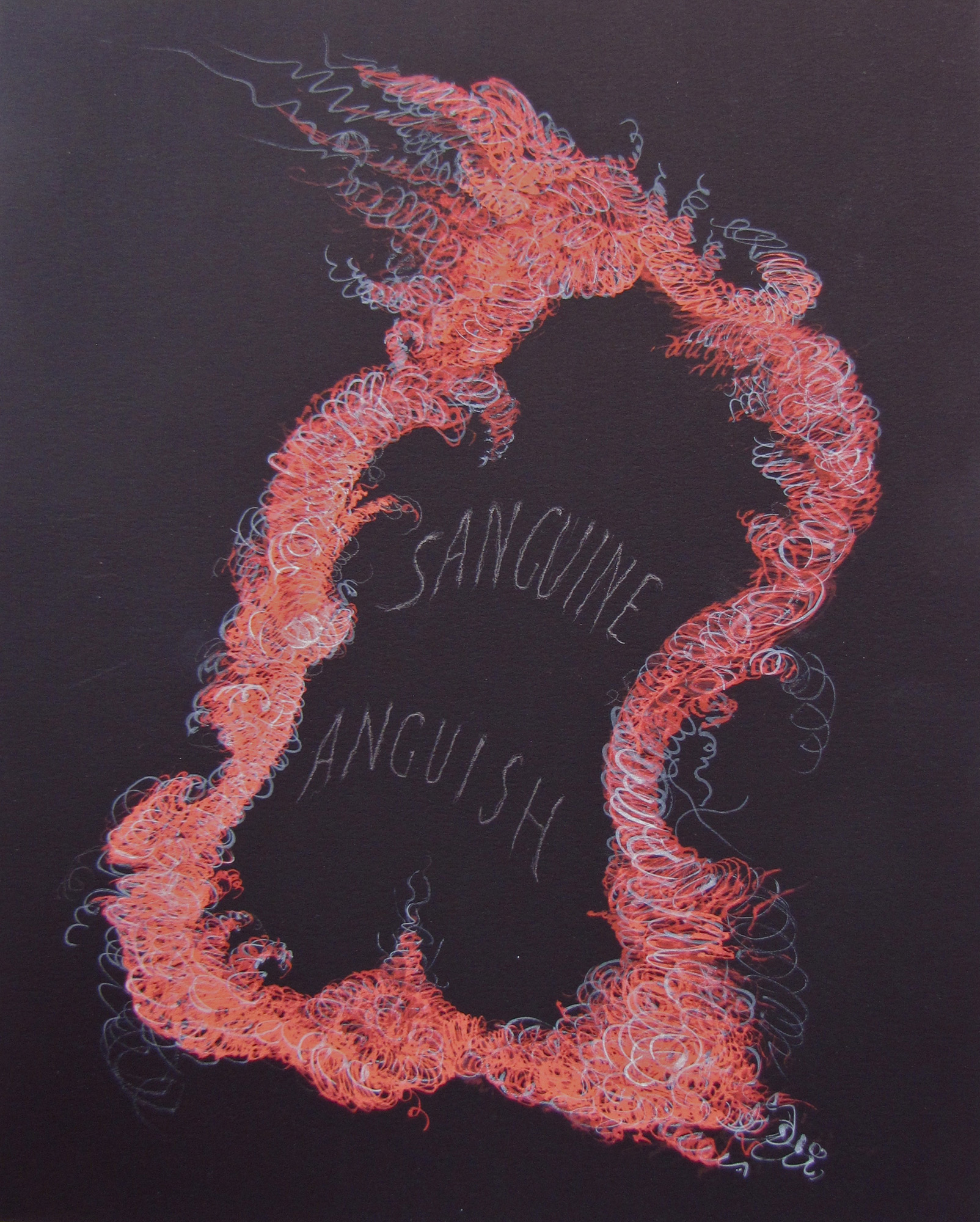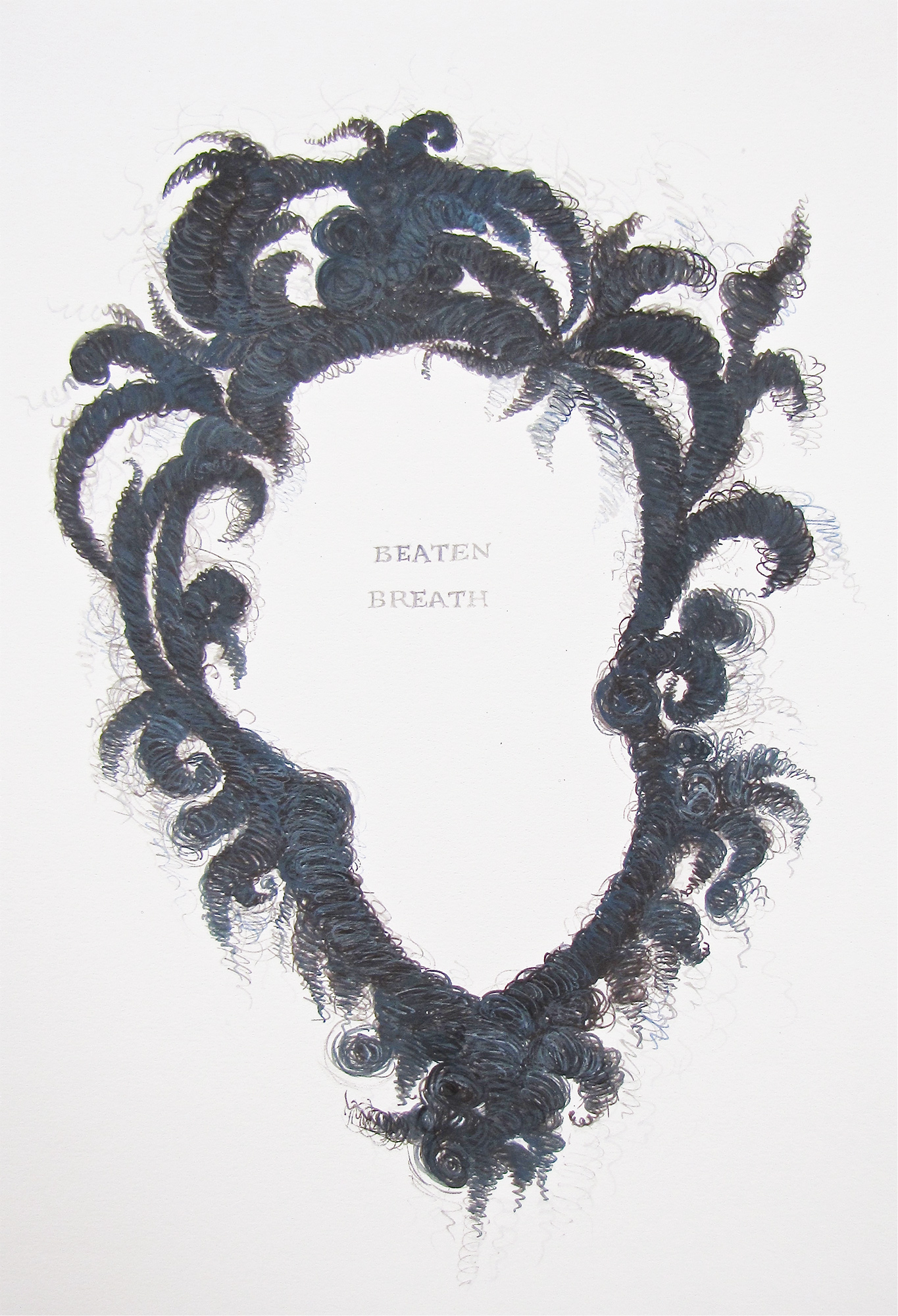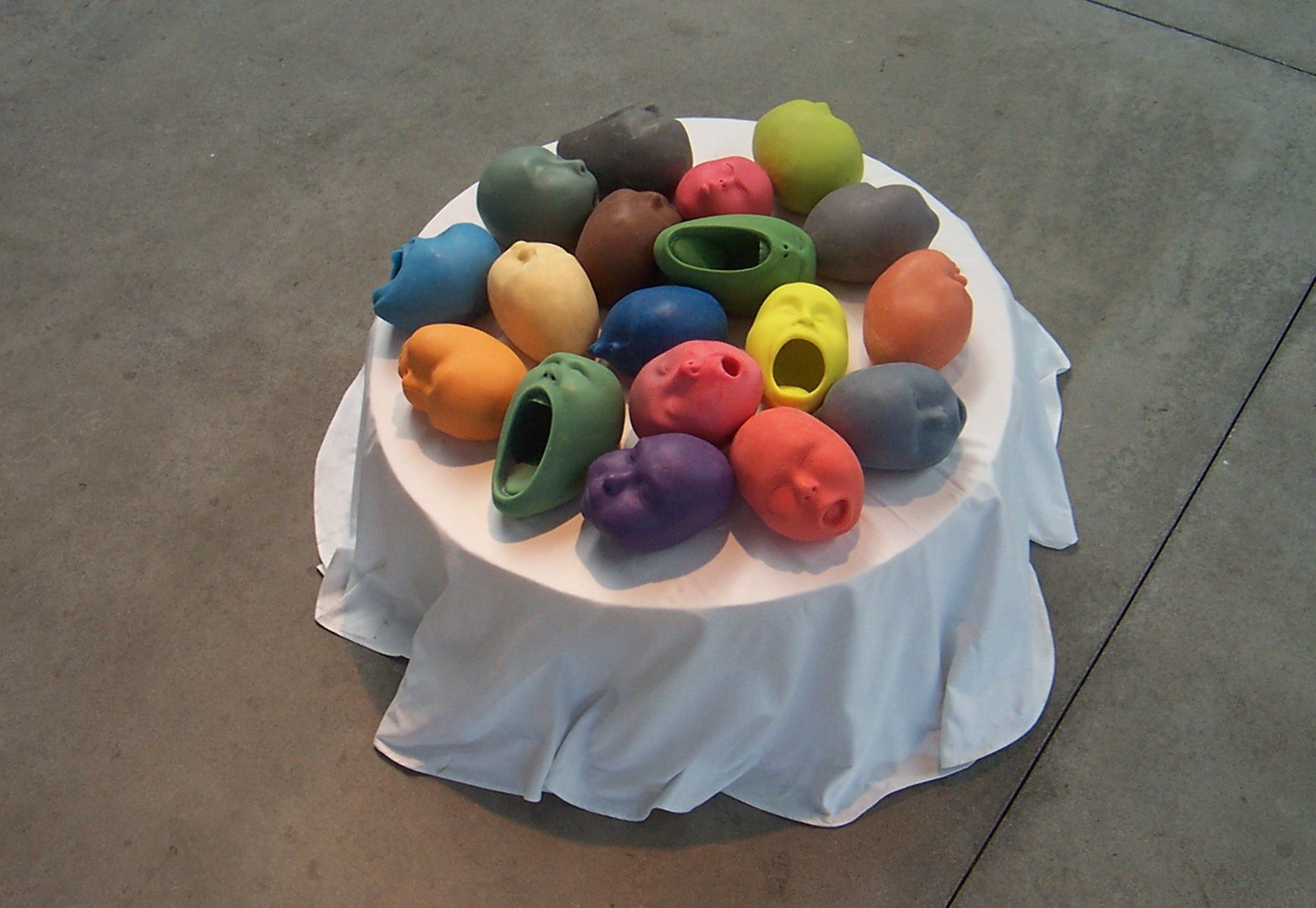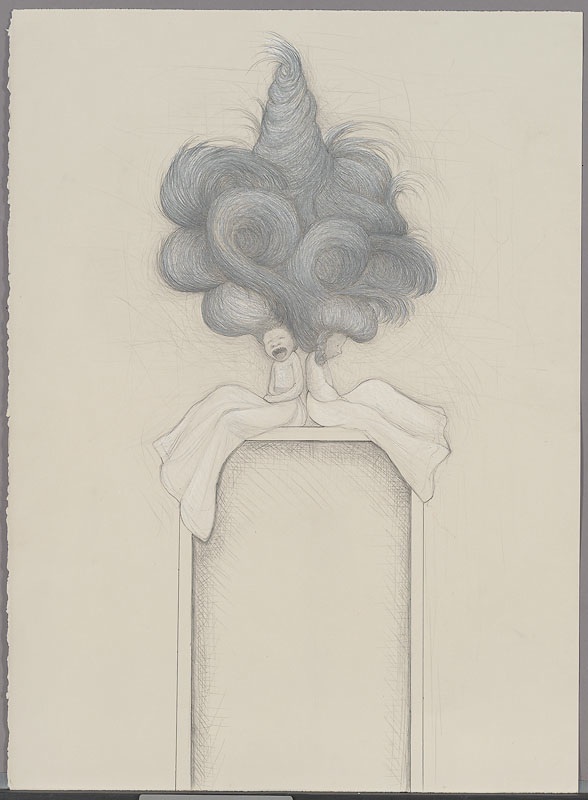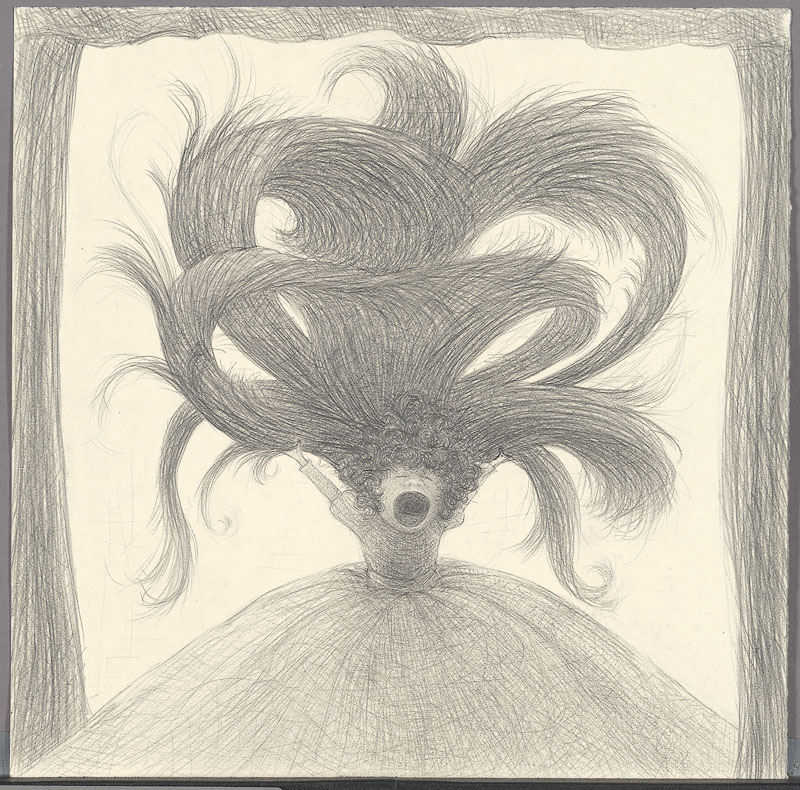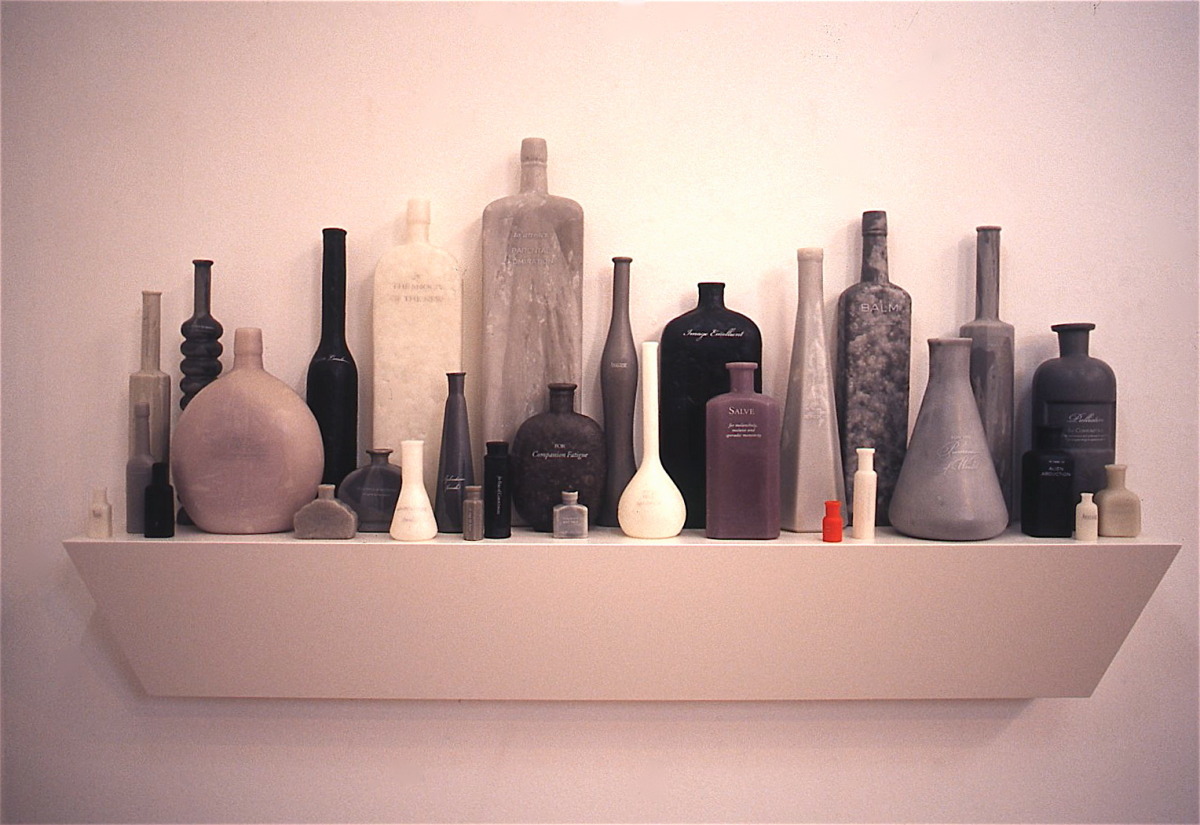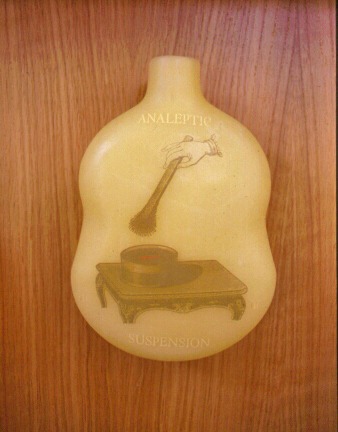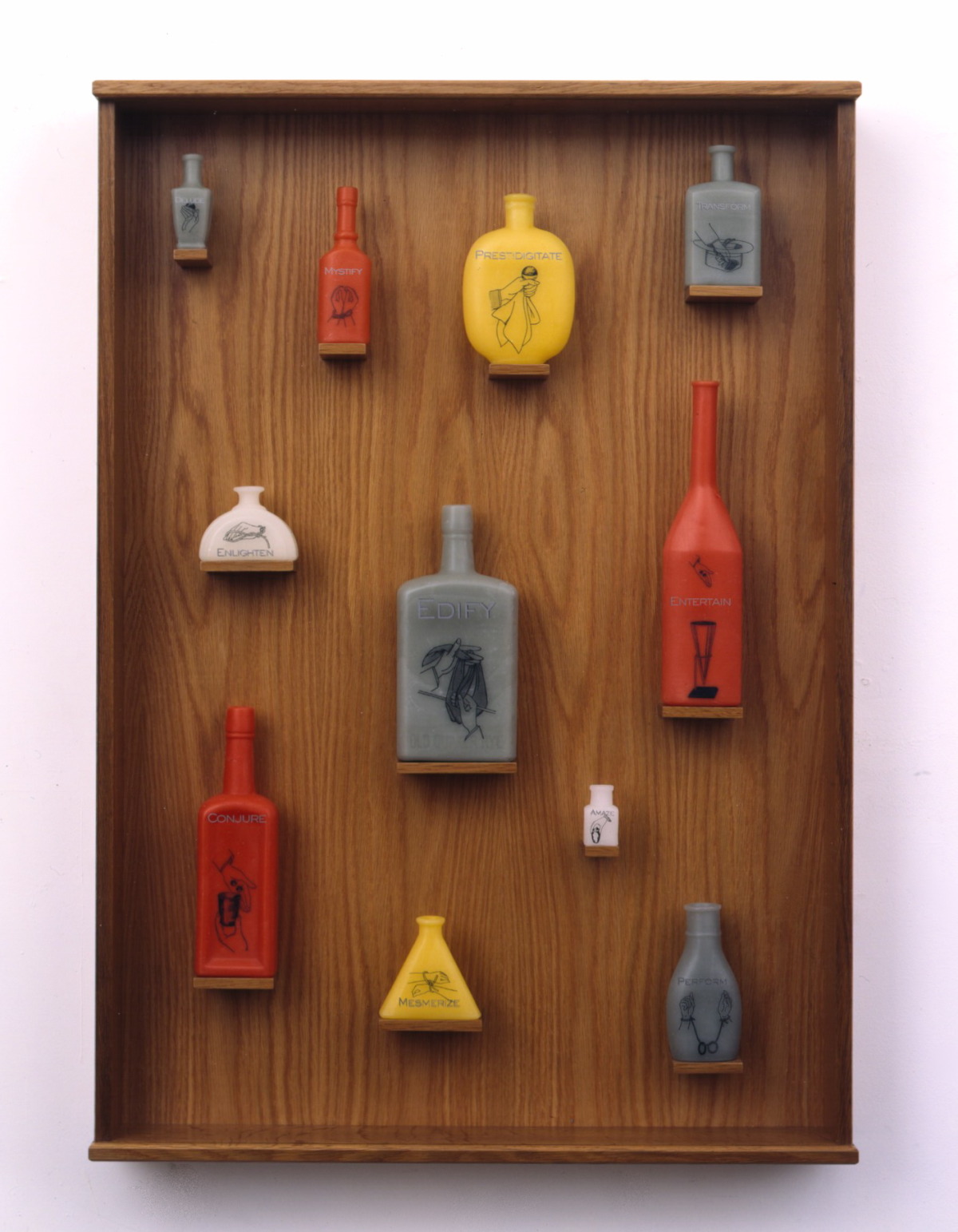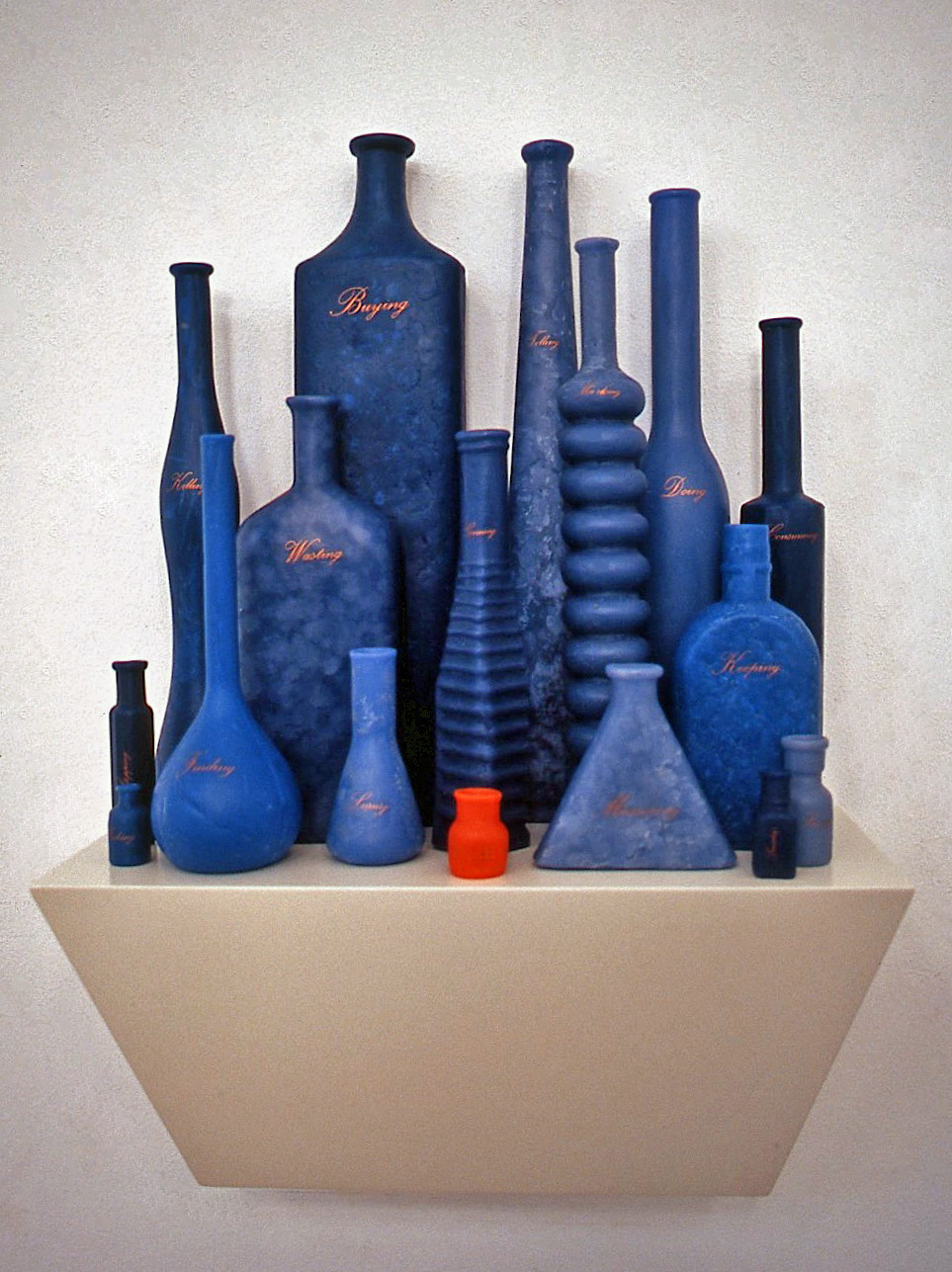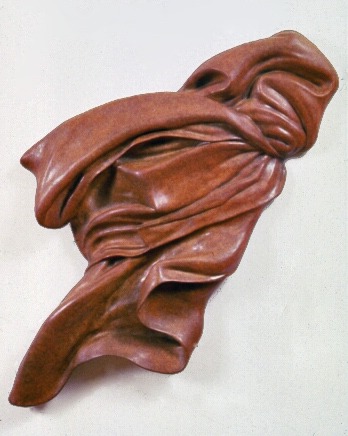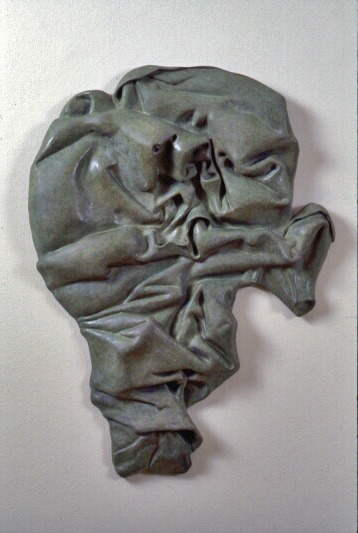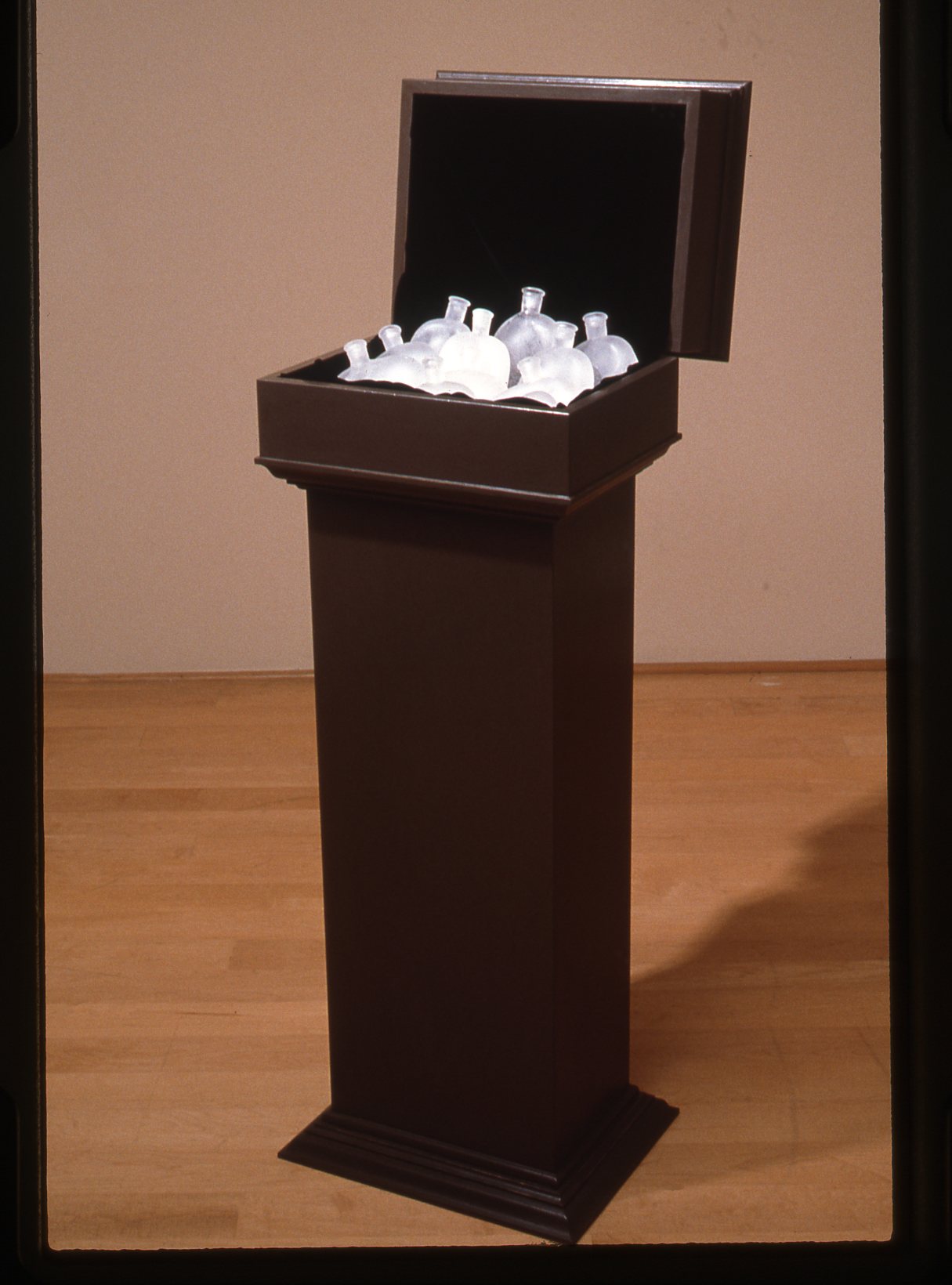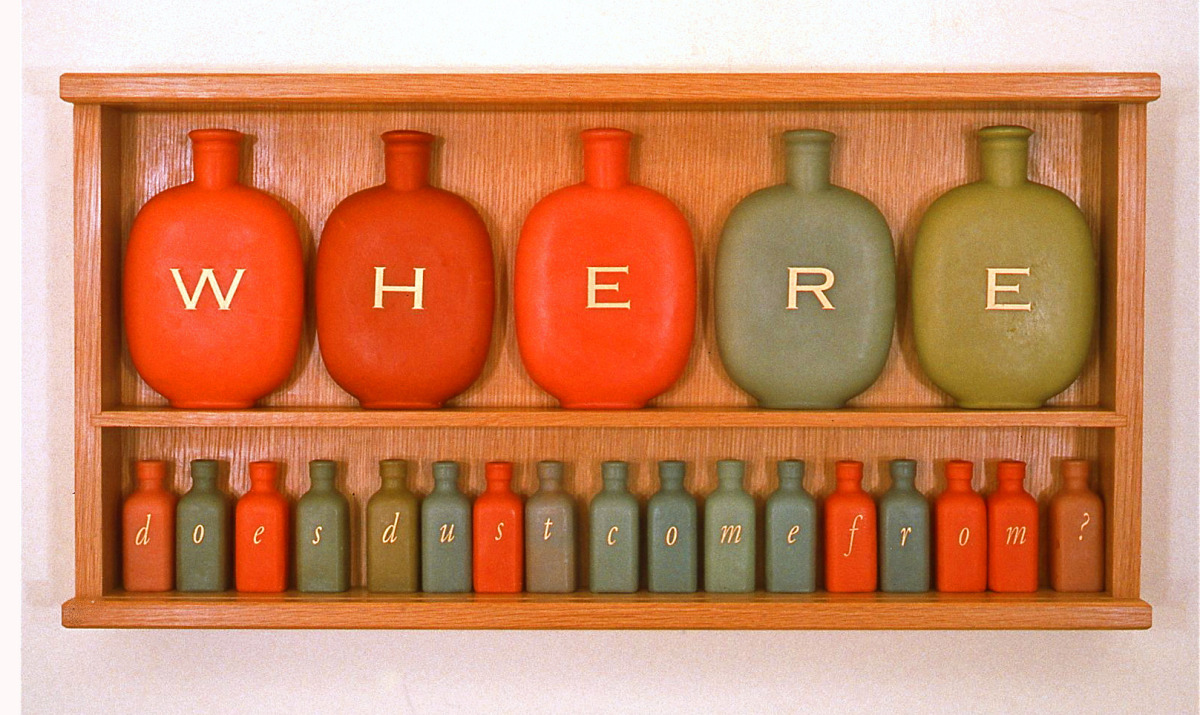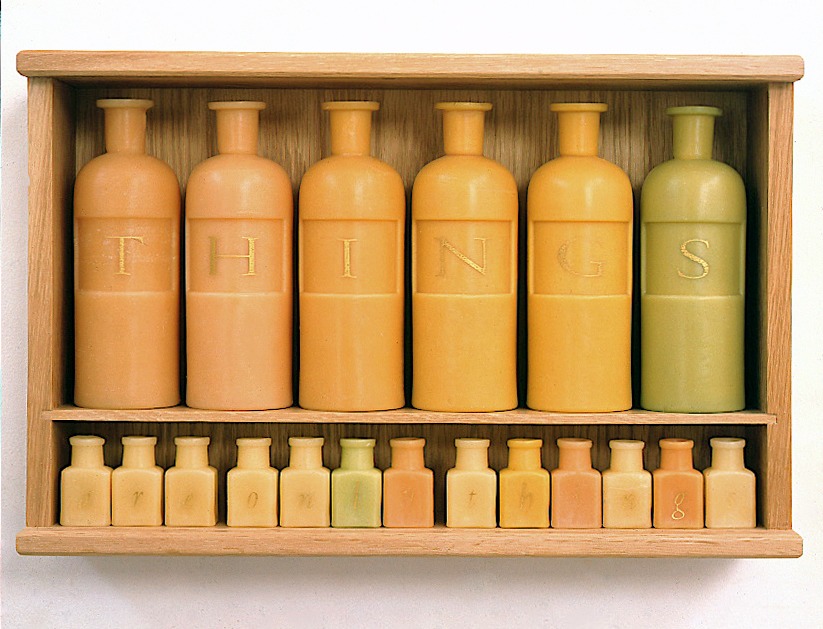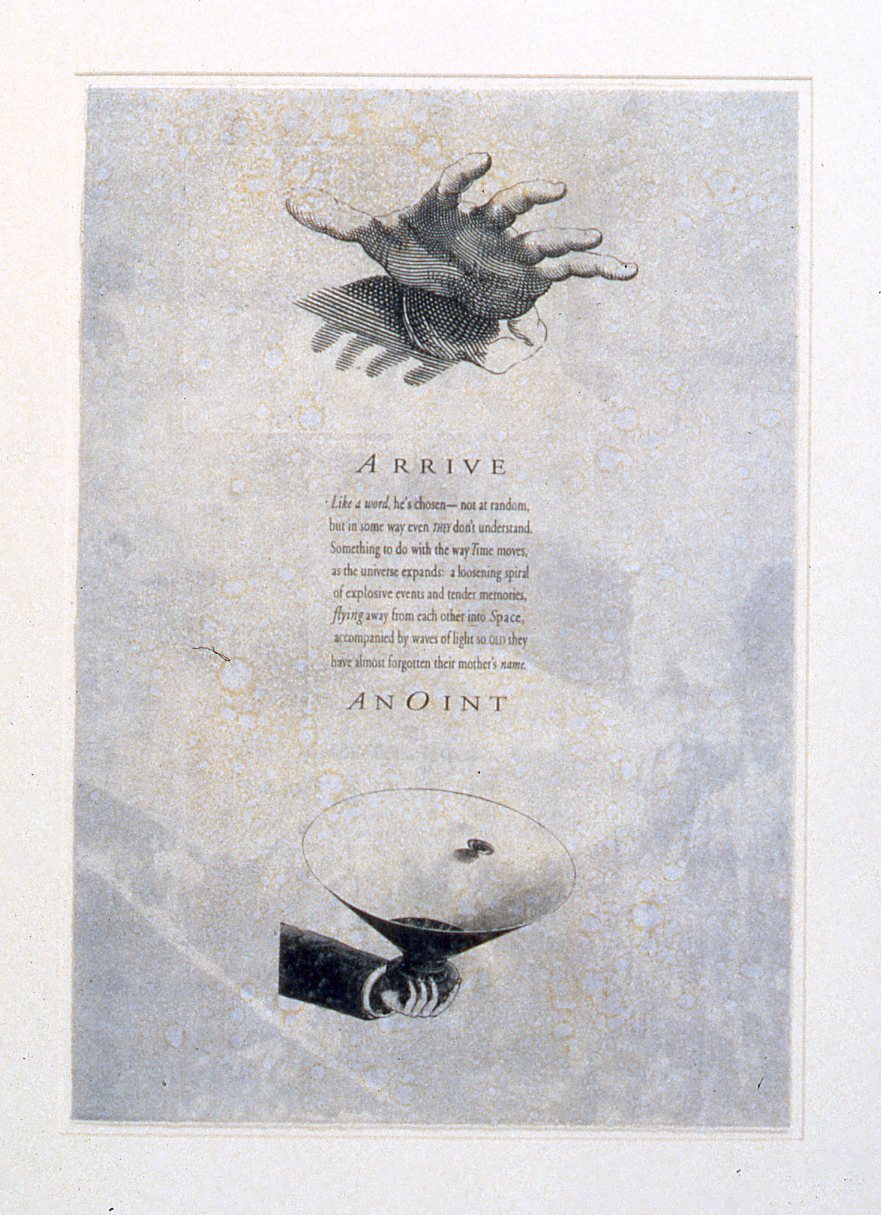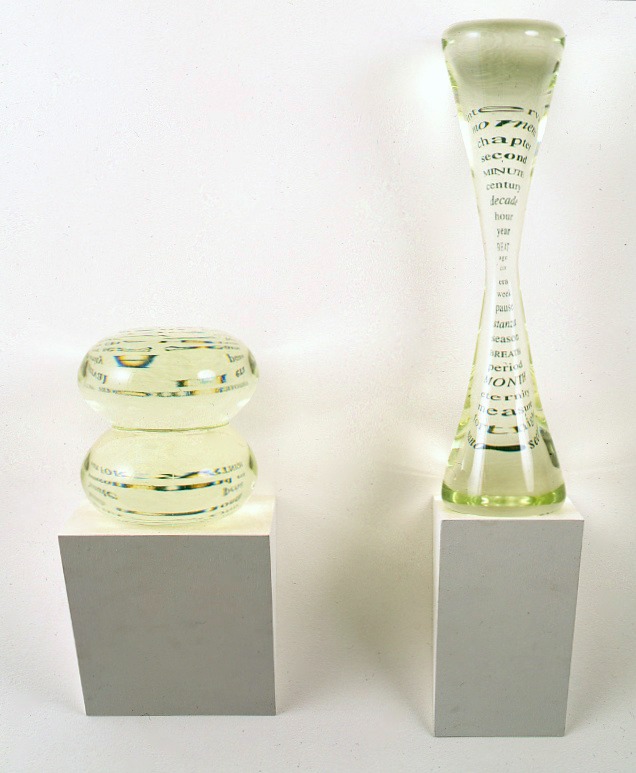The Fold, 2000: bronze, each from 2 1/2 to 3 feet in either dimension
In John Berger's peculiarly political novel titled A Painter of Our Time, the main body of the text supposedly consists of the journals of Janos Lavin, a Hungarian emigre painter living in London in the fifties. Lavin writes eloquently about his own life-- about how hard it is to be an artist in a society unappreciative of real art; about the revolution in his former homeland, and about art itself. In an entry from late summer of 1952, he ruminates:
"For the Renaissance artist draperies were what paint and drawing themselves have become for us. Their folds have become our brush marks... Renaissance drapery was as arbitrary as the facets of the Cubists... Drapery has nothing to do with dress... it entwines, flows over, trails beyond and glorifies the body just as three hundred years later Renoir made the light do."
In other words, drapery is a kind of language that changes over time. Interested in recovering that text in some personal way, I copied a detail from three images, each dating from a different century. Thus these are sculptural interpretations of two-dimensional depictions of three-dimensional drapery.
17th (red): from Abraham's Sacrifice of Isaac, a painting by Baciccio (detail of Abraham's cloak)
16th (green): from an engraving by Albrecht Durer (detail of a skirt)
15th (gray): from Virgin and Child by Joos van Cleve (detail of Mary's headcloth)






































